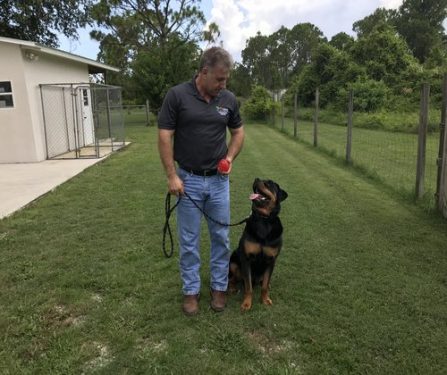Rottweiler Training Advice,
Dave has been working his Rottweiler for the last two weeks with learning how to polish up his obedience skills. If you’ve been following along you will see how far Dave has come in just two weeks.
In each video you see Kane and Dave getting better because Kane is learning to learn to, and Dave’s coordination skills are getting better. Whenever you first learn how to do something new- especially when learning how to train your dog.
If you have never done this before. It takes time to learn how to get the coordination skills you need, and that’s okay. But you will learn the more you practice the better you get.
Lesson Three. Dave and Kane.
Dave has done an awesome job with spending just 30 minutes a day, twice a day working on his obedience training with his Rottweiler Kane. I am so proud of him. As a teaching and an instructor, there’s nothing more than that, that makes us happy to see a student that goes home applies what they’ve learned.
German commands;
Schutzhund Training Commands
Schutzhund training commands are given in the activity’s home language, German. Common commands for Schutzhund are:
– Heel or Fuss (fooos)
– Sit or Sitz (sounds like “fits”)
– Down or Platz (plotz)
– Come/Here or Hier (hee er)
– Stay or Blieb (bly’b)
– Stand or Steh (shhtay)
– Fetch or Bring (with a rolled “r”)
– Jump or Hopp (hup)
– Go Out or Voraus (for owss)
– Track or Such (tasuuk)
– Bite or Fass (pucken)
– Out/Let Go or Aus (owwss)
– No or Pfui (fooey)
– No or Nein (nine)
In parentheses above, you’ll find the way to pronounce the German words in English. For example, voraus, or go out, sounds like “for owss.” Many police organizations and the military train their K9’s using these same German commands.
I am so blessed to have such awesome students. Thank you, Dave & Kane.
